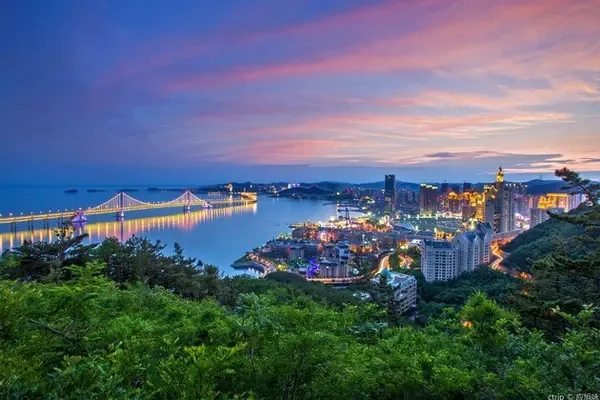introduce
The Shuangta Temple in the southern suburbs of Taiyuan is the landmark building of Taiyuan City and the theme pattern on the emblem of Taiyuan City. Shuangta Temple, formerly known as Yongzuo Temple, was built in the middle of Wanli in Ming Dynasty (1597-1602). Because there are two high towers in the temple, it is commonly known as Shuangta Temple. Nowadays, the locals are also accustomed to calling it the Twin Pagoda Temple, but they are relatively unfamiliar with the original name.
The architectural pattern of the Shuangta Temple is not complicated. It consists of three parts: the front yard, the back yard and the pagoda courtyard. The famous "Twin Pagodas" are in the pagoda courtyard. The mountain gate of Shuangta Temple is the opposite of most temples facing north and south. The mountain gate of Shuangta Temple opens to the north. After entering the mountain gate, tourists can walk from north to south. During the tour, they can see the main hall and stele corridor And the twin towers, these three places are more worth seeing in the temple.
The Daxiong Hall of the Shuangta Temple is a brick imitation wood building. The whole building has no beams or a single piece of wood, and is entirely made of bricks with fine and generous carvings. When you enter the Daxiong Hall, you can see the statues of the three Tathagatas enshrined in the hall: Amitabha, Sakyamuni and Medicine Master Tathagata. Among them, Amitabha Buddha is a standing bronze statue, while the other two are sitting iron statues. It can be seen that these three Buddha statues are not the original ones in the temple, but moved from different places.
The main hall of Shuangta Temple is a two-story structure. From the east side of the main hall, there are steps to climb to the second floor. On the second floor is the "Sansheng Pavilion", which enshrines the three great men: Avalokitesvara, Manjusri and Puxian. These statues of Bodhisattvas were also moved from other temples. If you come to the Daxiong Palace in May, you can also enjoy the century-old peony planted in the Ming Dynasty, named "Zixiaxian". It is rooted in the square flower bed in front of the Daxiong Palace and has been blooming here for more than 300 years. It is also a great pleasure for Taiyuan citizens to come to Shuangta Temple to see peonies.
On the way from the Daxiong Palace to the Pagoda Courtyard, there is a corridor, among which there is a "tablet corridor". If you are a calligraphy lover, you must come here to see it. Here you can see the "Baoxiantang Jigufatie" inlaid on the wall of the stele gallery, the "Gubaoxiantangfatie" in the Qing Dynasty and the stone carving of Su Dongpo's drunken brush "Chibi Nostalgia" carved in the Qing Dynasty. Among them, Su Dongpo's handwritten "Chibi Nostalgia" was written in the twenty-seventh year of Qianlong (1762), based on Tuomo Le Shangshi. It is said that there are only two preserved in the country at present, and the other is in Chibi on the east slope of Huangzhou, Hubei.
When you come to the pagoda courtyard in the south of the temple, the two ancient pagodas come into view completely. The two towers are of masonry structure, 60 meters apart. The carvings on the towers are beautiful and well-defined. The one in the southeast was built first (East Pagoda, also called Wenfeng Pagoda), but it is not a Buddhist pagoda. It is a "Fengshui Pagoda" built to make up for the fact that Taiyuan City's "high in the northwest and low in the southeast" is not conducive to the development of culture. Since its completion, it has been slightly inclined to the northwest. It is said that considering that the tower is located at the front of Dongshan Mountain and facing the impact of northwest wind, the designer deliberately tilted to the northwest to ensure the stability of the tower.
The northwest one is a Buddhist pagoda (Xuanwen Pagoda) built later. Because it is located in the northwest, it is also called "West Pagoda" or "North Pagoda" for short. It was supervised by Master Miaofeng (Monk Fudeng), an eminent monk in the Wanli period of the Ming Dynasty. Because there were Buddhist relics hidden in the pagoda at that time, it was also called Xuanwen Pagoda, or relic pagoda.
Most of the West Tower (Xuanwen Tower) was destroyed in the war of liberation, and what we see today was restored in the 1980s. If you are interested, you can climb the tower. However, it is recommended not to climb the tower, because the local air conditions, climbed the tower, looking around, it is also foggy.
opening hours
April 1-October 31 08:30-17:30 (last admission 17:30); November 1-March 31 next year 09:00-17:00 (last admission 17:00) :00)

